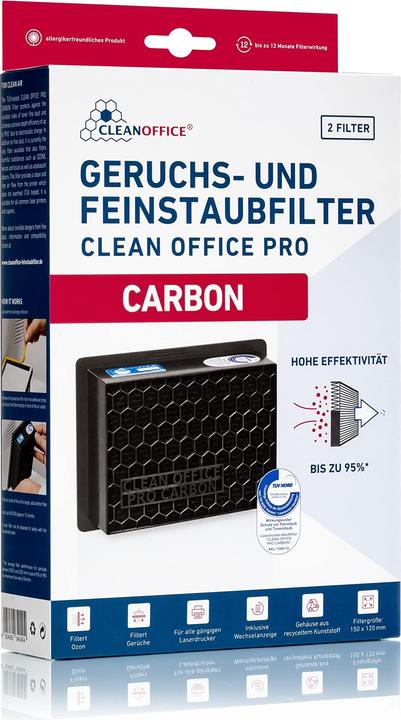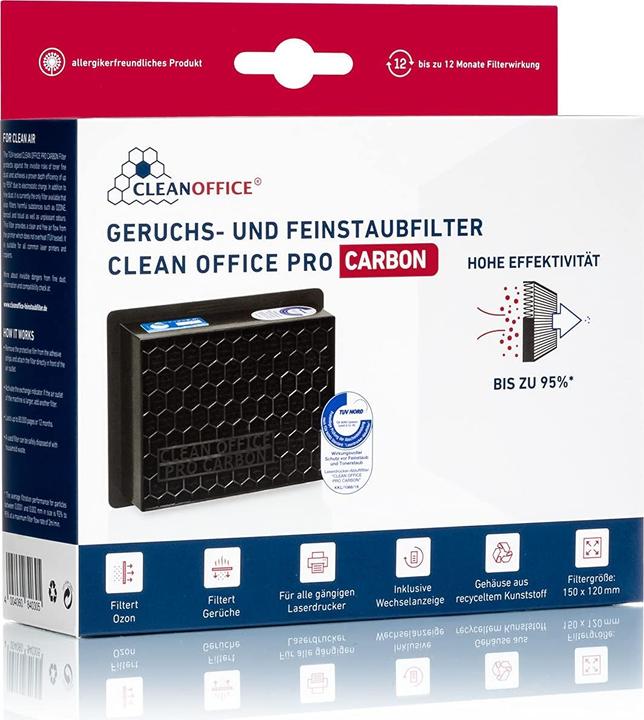
Best Clean Office products in the Air treatment accessories category
On this page you'll find a ranking of the best Clean Office products in this category. To give you a quick overview, we've already ranked the most important information about the products for you.
1. Clean Office Printer fine dust filter carbon 2s
Odor and fine dust filter for laser printers and copiers. Filters not only fine dust but also ozone. High filter performance - up to 95% of all fine dust particles from laser printers are filtered. Unique - currently the only product on the market that additionally filters harmful substances such as ozone, benzene, and toluene alongside dangerous fine dust. The activated carbon used protects against unpleasant odors. Capacity of up to 80,000 pages or up to 12 months, with a time replacement indicator on the filter. No impairment of printer function (TÜV certified). Housing made from recycled plastic. Safe disposal via household waste. Made in Germany - developed and produced in Germany.

2. Clean Office Printer fine dust filter carbon 1s
Odor and fine dust filter for laser printers and copiers. Filters not only fine dust but also ozone. High filtration performance - up to 95% of all fine dust particles from laser printers are filtered. Unique - currently the only product on the market that additionally filters harmful substances such as ozone, benzene, and toluene alongside dangerous fine dust. The activated carbon used protects against unpleasant odors. Capacity of up to 80,000 pages or up to 12 months, with a time replacement indicator on the filter. No impairment of printer function (TÜV certified). Housing made from recycled plastic. Safe disposal via household waste. Made in Germany - developed and produced in Germany.

3. Clean Office Pro fine dust filter 2 (8302020)
A dust particle visible to the human eye has a size of 500 micrometers (0.5 mm). A fine dust particle that is no longer visible to us is smaller than 10 micrometers (0.01 mm). The finer these particles are, the easier and deeper they can be inhaled through the respiratory tract into the bloodstream and thus into the organs. This is also referred to as overcoming the blood-air barrier.
